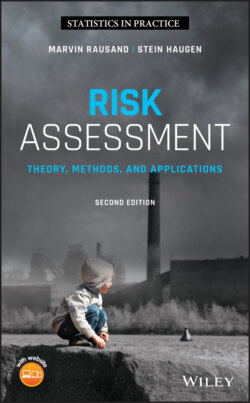Читать книгу Risk Assessment - Marvin Rausand - Страница 234
Chapter 5 Risk Acceptance 5.1 Introduction
ОглавлениеResults from risk analyses are used as input to decision‐making. In many cases, the decisions are concerned with whether the risk has to be reduced. In an ideal world, we could argue that it should be unnecessary to make this decision; instead, we should avoid all risk. The reality is usually that this is not possible, very often for cost reasons but often also for practical reasons. Normally, we have to accept that all risk cannot be removed. The question then becomes how much risk should be removed? A balance has to be found between our ideal goal of removing all risk and the practical constraint of having a limitation in how much resources can be used to reduce risk. This is where risk acceptance criteria (RAC) are needed to help us decide what this balance should be.
Many people do not like the terms acceptable risk and risk acceptance because “to accept” may imply “to consent” or “to agree with.” Also, they do not want to give the impression that risk associated with their activity is viewed as unconditionally acceptable (CCPS 2009). They prefer the term tolerable risk because this term makes it clear that this risk is something we can cope with, something we can endure. We tolerate risk, but we do not accept it. The same people also prefer the term risk tolerance criteria over RAC. We have chosen to use the term RAC in this book.
In the Railway Safety Directive (EU 2016), the term common safety targets (CSTs) is used. The directive states that “CSTs may be expressed in terms of risk acceptance criteria.”
